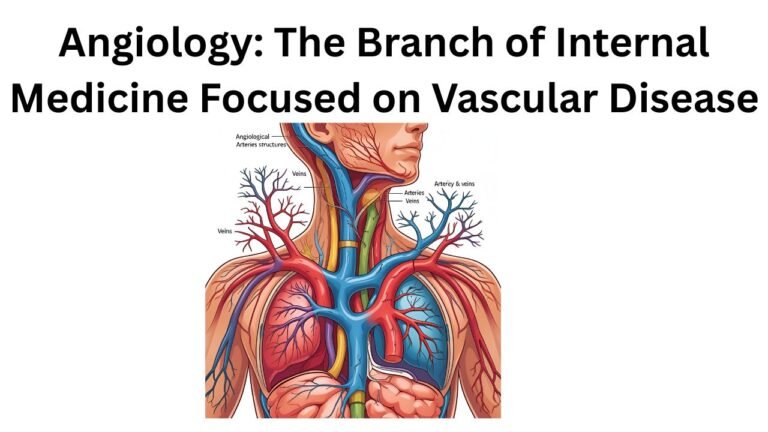Introduction to Trophology
Trophology is an essential branch of nutritional science that delves into the intricate relationships between food components and human health. Originating from the Greek word “trophos,” which means “nourisher,” trophology emphasizes not only the consumption of food but the understanding of how different food elements interact within the body. This area of study significantly differs from general dietary studies, which often concentrate primarily on caloric intake or macro/micronutrient contents. Instead, trophology takes a more holistic approach, examining the ways in which various foods promote or hinder optimal health outcomes.
The significance of trophology in the broader field of nutrition cannot be overstated. As individuals seek to understand the impact of their dietary choices on overall well-being, trophology provides valuable insights into the synergy of food. By analyzing how specific food combinations enhance digestion, metabolism, and nutrient absorption, trophology paves the way for informed dietary practices that align with individual health goals. This approach is particularly relevant in today’s world, where improper food combinations are often blamed for digestive issues and chronic health conditions.
Furthermore, trophology plays a critical role in guiding nutritional strategies that cater to diverse population groups, including those with specific dietary requirements or health challenges. By understanding the interactions and effects of food types on the body, health practitioners can offer tailored dietary recommendations that not only address immediate nutritional needs but also promote long-term health resilience. As we continue to advance in the study of nutrition, the principles of trophology will remain vital in shaping effective dietary guidelines and fostering improved health outcomes across various demographics.
Historical Context of Trophology
The concept of trophology, derived from the Greek words “trophe” meaning nourishment and “logos” meaning study, has a rich and diverse history that can be traced back to ancient civilizations. The roots of nutritional science can be observed in early cultures, where the understanding of food’s impact on health and wellness began to take shape. Ancient Egyptians, Greeks, and Chinese scholars were among the first to document dietary practices, emphasizing the relationship between food choices and health outcomes. They understood that certain foods could influence well-being, leading to the initial exploration of various dietary components.
During the Classical period, philosophers such as Hippocrates, often referred to as the father of medicine, laid foundational principles regarding nutrition. He famously stated, “Let food be thy medicine and medicine be thy food,” thereby underpinning the importance of diet in overall health. The Greeks classified foods based on their qualities and effects on the body, highlighting early notions of food classification that would later inform modern trophology. Similarly, in ancient China, the belief in the balance of yin and yang was crucial in their culinary practices, illustrating an early holistic approach to dietary health.
As time progressed into the Middle Ages and the Renaissance, notable figures such as Paracelsus began to connect the dots between food, health, and disease more scientifically. The advent of the microscope further propelled the study of nutrition, allowing for a more detailed examination of food components, paving the way for later scientific exploration of vitamins and minerals. The 19th and 20th centuries marked revolutionary periods in trophology, with the establishment of dietary guidelines, the discovery of essential nutrients, and the link between nutrition and chronic diseases becoming widely recognized. This evolution underscored the importance of trophology as a vital scientific discipline, establishing its crucial role in promoting health and preventing illness through informed nutritional choices.
The Principles of Trophology
Trophology, a pivotal branch of nutritional science, delves into the intricate relationships between food and health, emphasizing the essential components of nourishment—namely macronutrients, micronutrients, and other vital factors influencing the body. Understanding these core principles enhances our comprehension of how nutrients function and contribute to overall well-being.
Macronutrients, comprising carbohydrates, proteins, and fats, are the primary energy sources for the body. Carbohydrates, for instance, are crucial for providing immediate energy, especially for brain function and physical activity. Proteins serve a different role, primarily involved in building and repairing tissues, supporting immune function, and acting as enzymes that facilitate biochemical reactions. Fats, though often mischaracterized, are indispensable for hormone production, nutrient absorption, and insulatory functions that protect vital organs.
Complementing macronutrients, micronutrients—encompassing vitamins and minerals—play critical roles in various physiological processes. Vitamins such as C and D are vital for immune support and bone health, respectively, while minerals like calcium and iron are essential for bone strength and oxygen transport within the body. A well-rounded diet rich in these nutrients is fundamental for maintaining homeostasis and supporting optimal metabolic functions.
Furthermore, trophology also encompasses dietary fiber, antioxidants, and phytonutrients, which, although not classified as conventional nutrients, significantly impact health. Dietary fiber enhances digestive health, while antioxidants protect cells from free radical damage, thereby potentially reducing the risk of chronic diseases. Phytonutrients, found in a variety of plant foods, contribute to their color and flavor and have been associated with various health benefits.
By understanding the principles of trophology, individuals can make informed dietary choices that bolster their health and longevity. The interdependence between nutrients and metabolic functions underscores the necessity for a balanced and diverse diet, significantly influencing overall health outcomes.
Trophology and Human Physiology
Trophology serves as a pivotal branch of science that delves deep into the intricate dynamics between nutrition and human physiology. The vital importance of nutritional intake cannot be overstressed, as it plays a fundamental role in regulating bodily functions, promoting growth, and fostering overall development. Nutrients serve as the building blocks for essential bodily processes, including metabolic pathways, cellular repair, and immune function. In essence, the food we consume directly correlates to our physiological state and health outcomes.
For instance, a deficiency in key nutrients such as vitamins and minerals can lead to a wide array of health complications. Vitamin D deficiency, for example, is linked with weakened bone structure, potentially resulting in conditions like osteoporosis. Similarly, a shortage of iron can cause anemia, characterized by fatigue and diminished oxygen transport in the bloodstream. These examples illustrate the delicate balance required in yielding optimal health through proper nutritional management.
Conversely, excessive intake of certain nutrients can also have detrimental effects on human physiology. A high intake of saturated fats, for instance, is associated with an increased risk of cardiovascular diseases, as it can lead to elevated cholesterol levels. In this regard, trophology not only highlights the necessity for adequate nutrient consumption but also emphasizes the importance of moderation in dietary habits. This balanced approach serves as a cornerstone of preventive healthcare, wherein maintaining optimal nutrition can mitigate the risk of developing chronic diseases and enhance longevity.
The study of trophology thus provides valuable insights into how we can tailor our diets to support physiological health. By understanding the interconnectedness between nutrition and the body’s functioning, individuals are empowered to make informed dietary choices, fostering a healthier lifestyle and reducing the risk of nutrient-related health issues.
The Role of Trophology in Disease Prevention
Trophology, the science of nutrition, plays a vital role in the prevention of numerous diet-related diseases, including obesity, diabetes, and heart disease. As public health concerns continue to rise globally, understanding the principles of trophology becomes essential for developing effective dietary strategies aimed at mitigating health risks. By focusing on the biochemical and physiological interactions between food and the human body, trophology emphasizes the importance of personalized nutrition tailored to an individual’s unique needs, lifestyle, and genetic makeup.
Obesity, a significant risk factor for various chronic diseases, is often the result of an imbalance between calorie intake and expenditure. Through the lens of trophological principles, individuals are encouraged to consume nutrient-dense foods rather than calorie-dense ones. This shift not only aids in weight management but also plays a critical role in preventing the onset of type 2 diabetes. By prioritizing complex carbohydrates, lean proteins, and healthy fats, a balanced diet can improve insulin sensitivity and glucose metabolism, substantially reducing the risk of diabetes among at-risk populations.
Moreover, heart disease remains one of the leading causes of death worldwide. The role of trophology in preventing such conditions is evidenced by the emphasis on heart-healthy nutrients. Incorporating sufficient omega-3 fatty acids, soluble fiber, and antioxidants into the diet aids in reducing inflammation and improving cardiovascular health. Trophological guidelines often advocate for the inclusion of foods such as fatty fish, whole grains, fruits, and vegetables, all of which contribute to maintaining a healthy heart.
Furthermore, personalized nutrition strategies based on trophological concepts help individuals achieve optimal health outcomes. By understanding one’s specific nutritional needs, preferences, and potential health risks, these tailored approaches can lead to significant improvements in overall wellness. This individualized focus ensures that dietary choices not only support disease prevention but also promote a healthier, more sustainable lifestyle.
Trophology in Modern Nutrition Science
Trophology, which emphasizes the significance of food combinations and their effects on bodily processes, has evolved to play an integral role in shaping contemporary nutrition science. As research in this discipline continues to expand, modern dietary recommendations increasingly incorporate principles derived from trophological studies. This integration is crucial for tailoring nutrition advice that addresses individual health needs, particularly in an era where personalized nutrition gains traction.
Recent findings highlight the relationship between food synergy and nutrient absorption, underscoring how specific food pairings can enhance the bioavailability of essential nutrients. For instance, consuming fat-soluble vitamins alongside healthy fats improves their absorption, a principle within trophology that aligns with current nutrition guidelines. Such insights demonstrate the relevance of trophology in developing effective dietary strategies for preventing deficiencies and promoting overall well-being.
Moreover, the intersection of trophology with nutrigenomics—a field studying the interaction between nutrition and genes—heralds new opportunities in personalized dietary planning. By understanding how individual genetic profiles dictate responses to various food combinations, health professionals can employ trophological principles to craft nutrition plans that are not only effective but also aligned with an individual’s genetic predispositions. This provides a more nuanced approach to nutrition that encompasses both the science of food combinations and the biology of the individual.
The concept of functional foods, which are designed to provide health benefits beyond basic nutrition, further illustrates the application of trophology in modern dietary science. By leveraging trophological insights, the development of functional foods can be aligned with scientific understanding of food interactions. Consequently, this drives the creation of food products that maximize health outcomes, bridging traditional knowledge with cutting-edge research.
Global Perspectives on Trophology
Trophology, the science that delves into the intricate relationship between nutrition and health, varies significantly across different cultures. Each society develops unique dietary practices, influenced by environmental, historical, and social factors. These practices shape local nutrition philosophies and are rooted in centuries of tradition. As individuals embrace their cultural heritage, their dietary choices reflect the trophological principles inherent to their community.
For instance, in Mediterranean regions, there is a strong emphasis on plant-based foods, olive oil, and fish, which are widely recognized for their health benefits. This diet is not merely a collection of food items but embodies a holistic approach to well-being that spans generations. Traditional Mediterranean diets exemplify how cultural perspectives influence nutritional practices, demonstrating the local understanding of balance and moderation.
In contrast, East Asian countries often emphasize harmony in meals, incorporating fermentation and diverse plant-based ingredients. The Japanese diet, for example, promotes rice, fish, and seasonal vegetables, alongside practices such as pickling and slow cooking. Trophological knowledge within these cultures highlights the importance of freshness and seasonal variety, which enhances both nutrient intake and culinary experience.
Additionally, indigenous diets worldwide showcase a profound connection between local ecology and nutritional health. Indigenous peoples often rely on native crops and traditional food sources, encapsulating centuries of ecological wisdom in their trophological practices. Such localized knowledge fosters sustainable eating habits that support both community health and environmental stewardship.
Recognizing these cultural differences in dietary practices is crucial to enhancing global health. By appreciating localized trophological knowledge, nutritionists and health professionals can develop tailored interventions that respect cultural values while promoting healthier eating habits. This collective understanding of diverse nutritional philosophies not only enriches the field of trophology but also lays the groundwork for effective global health initiatives.
Practical Applications of Trophology
Trophology is a field that delves into the science of nutrition, providing valuable insights into how dietary choices impact overall health. To apply trophological principles effectively in daily life, individuals can start by focusing on informed meal planning. This process includes understanding the nutritional content of different foods and making sure that meals consist of a balanced array of macronutrients and micronutrients.
One practical approach is to incorporate a variety of foods into one’s diet, as diverse food options can deliver a broader spectrum of essential nutrients. Incorporating fruits, vegetables, whole grains, lean proteins, and healthy fats should be a priority. Individuals can enhance their meal planning by using tools such as food diaries or meal prep applications that emphasize nutritional values, helping them track their consumption and align it with trophological guidelines.
Understanding food labels is another critical aspect of applying trophology principles. By learning to read and interpret nutritional information, consumers can make better choices. It is essential to look for key indicators such as serving sizes, calorie content, and the amounts of sugars, fats, and proteins per serving. Awareness of these factors enables individuals to discern healthier options and avoid products laden with artificial additives or excessive sugars.
However, accessibility to nutritious foods remains a barrier for many individuals, which highlights the importance of community resources. Farmers’ markets, local cooperatives, and community-supported agriculture can increase access to fresh produce and healthy food options. Advocating for policies that promote access to nutritious foods can help create healthier communities. By understanding and embracing trophological principles, individuals can pave the way for improved health and well-being through mindful dietary choices.
Conclusion: The Future of Trophology
As we delve into the field of trophology, it becomes increasingly evident that this branch of nutrition science holds significant promise for advancing our understanding of human health and well-being. The studies within trophology focus on the intricate interplay between nutrition and biological processes, emphasizing how the quality and composition of food can profoundly impact overall health outcomes. Current research is yielding valuable insights into various dietary patterns, micronutrient roles, and the molecular mechanisms underlying nutrient absorption and metabolism.
Looking ahead, the future of trophology is poised for exciting developments, driven by advancements in research methodologies and technology. The emergence of precision nutrition, which tailors dietary recommendations to individual genetic profiles, is a notable trend that trophologists are increasingly exploring. This personalized approach, rooted in trophological principles, has the potential to optimize nutrient intake, mitigate chronic diseases, and enhance overall well-being.
Furthermore, the integration of artificial intelligence and machine learning into nutritional science could revolutionize how we analyze dietary data and predict health outcomes. By leveraging large datasets, researchers can uncover complex relationships between diet, lifestyle, and health. This evolution in research methodologies will undoubtedly deepen our understanding of trophology and facilitate the development of evidence-based dietary guidelines.
Additionally, as public awareness surrounding nutrition and wellness continues to grow, there exists an opportunity for trophology to play a pivotal role in shaping community health initiatives. By promoting informed dietary choices and fostering a deeper understanding of the nutritional value of food, trophologists can contribute to improved public health results.
In conclusion, trophology stands at a promising crossroads, encouraging ongoing exploration and engagement. As advancements unfold, they will unlock new possibilities for fostering enhanced health, resilience, and vitality through informed nutrition practices.





